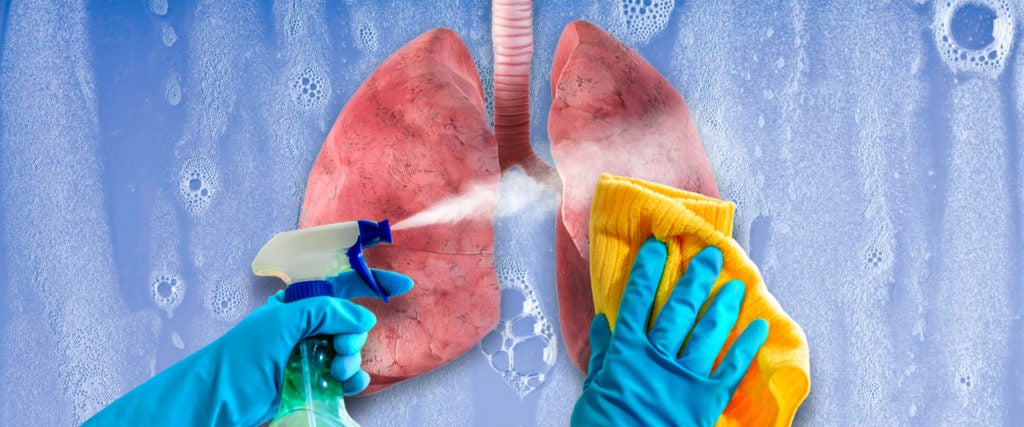Theme park characters, sports mascots, medical professionals, furries, high school theater kids and children on Halloween all provide solid evidence that CO2 poisoning doesn’t happen from wearing a mask. Yet some of the COVID-19 conspiracy theorists are refusing to wear masks in public because of their completely unfounded belief that mask-related CO2 poisoning is a thing.
Masks won’t hurt you. But it’s possible some of the other COVID-19 preventative measures we take could.
In recent months, most of us have upped our use of bleach and other heavy-duty cleaners capable of killing the virus. Unfortunately, the effectiveness of these cleaners comes with a trade-off: They’re strong enough to kill germs and bacteria and also strong enough to damage your lungs. According to a 2017 study published in the American Journal of Industrial Medicine, disinfectant use among health-care workers has been linked to respiratory disorders like asthma. More specifically, comprehensive studies of nurses’ health from the Harvard T.H. Chan School of Public Health have found that those who cleaned with bleach at least once per week were 32 percent more likely to develop chronic obstructive pulmonary disorder (COPD), than the average person.
COPD specifically is caused by irritation to the lungs. Fumes from chemicals such as bleach are capable of causing this kind of irritation, and the more regularly one is exposed to such fumes, the more the irritation increases.
In addition to bleach cleaning, nurses are likely exposed to more irritating chemicals than the average person by nature of their job and the hospital cleaning environment. Custodians and other occupations where industrial cleaning supplies are utilized multiple times per day are also at an increased risk.
So while cleaning your own bathroom once a week with bleach won’t likely increase your risk for COPD in the same way, developing a habit of cleaning your home with bleach every single day could, and cleaning with bleach if you already have lung conditions can increase symptoms.
Further, it’s frighteningly easy to create lethal gasses utilizing just bleach and ammonia or bleach and vinegar. When cleaning with bleach, it’s important to never mix it with any other chemical or cleaner besides water and to keep the area you’re cleaning ventilated. In a confined space, you’re much more likely to experience lung irritation from the bleach. Spray cleaners, particularly aerosols, can be worse for the lungs than the liquid version since you’re more likely to inhale them. Wipes, then, are ideal, since the chemicals remain more concentrated within the wipe.
The real risk from cleaning with bleach comes from using it excessively. If COVID-19 has turned you into more of a germaphobe, I don’t blame you, but you’ll still want to limit your bleach use. As everything reopens, though, more and more workers will be exposed to cleaning chemicals. Collectively, we probably will see increased lung damage from bleach among custodians, nurses and possibly wait staff whose new responsibility is to spray down tables with bleach after each customer.
All of which is to say, everyone who has to be working now should be making way more money, and if you’re gonna go out, tip heavily.

